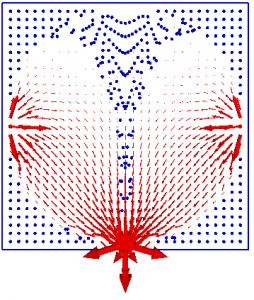An interesting research project has shown that the same parts of the brain light up when you’re telling a story as when you’re listening to the story. So much so, that you begin to anticipate and parts of the your brain actually light up before the same parts in the storyteller’s. And the greater the synchronization, the greater the recall of the story.
The researchers found considerable synchronization between Silbert’s brain-activation patterns and those of her listeners as the story unfolded. For example, as Silbert spoke about her prom experience, the same areas lit up in her brain as in the brains of her listeners. In most brain regions, the activation pattern in the listeners’ brains came a few seconds after that seen in Silbert’s brain. But a few brain areas, including one in the frontal lobe, actually lit up before Silbert’s, perhaps representing listeners’ anticipating what she was going to say next, the team says. – Balter, 2010
That’s fascinating enough, but the control of their experiment was to have listeners listen to a story in a language they did not know. There was not the same synchronization. This means, if we extrapolate a little, that the amount of language comprehension determines how much you learn from a conversation, or hearing a story, or listening to a lecture, or even for understanding a set of oral instructions.
So if you want students to remember something you need to speak in their language. Language here refers not just to English versus Russian or whatever, but speaking using common idioms that the student is, like, you know, familiar with.

James Paul Gee has written a lot about this type of communication, and what it means for learning. He argues that meaning is situated, that is, how we understand something that is said to us depends a lot on our previous history and experiences. The most effective communication only really occurs within communities that have shared the same, or similar, experiences.
We are as teachers, of course, trying to expand student’s ability to use language, and introduce them to the language of different communities. But we should probably pay attention to how we speak in different contexts, and speak in their language when we want them to really remember something.



